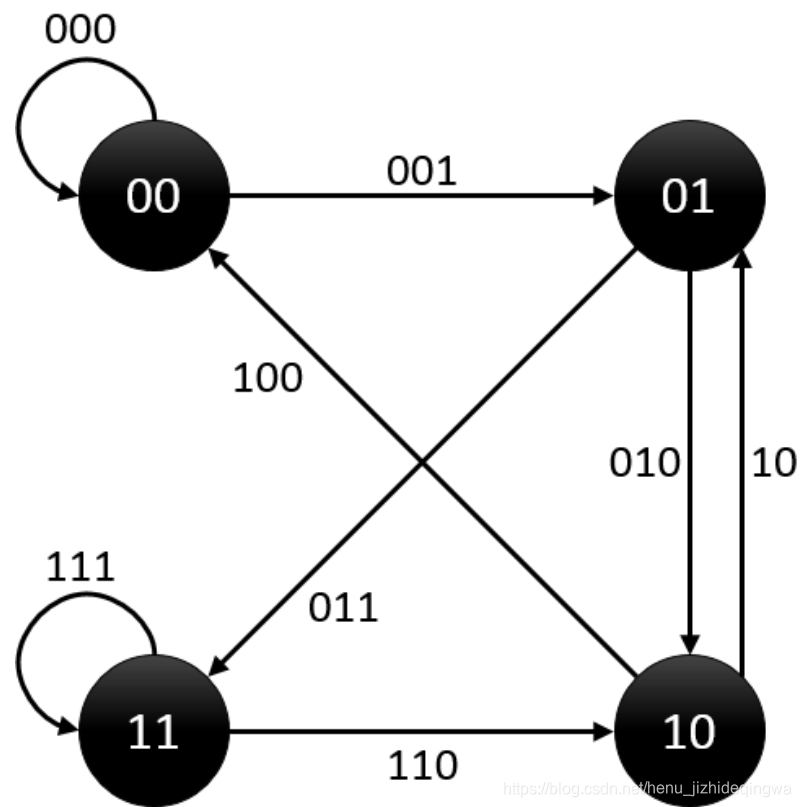hihor 學習日記:hiho一下 第五十一週 (尤拉圖)
阿新 • • 發佈:2018-12-30
http://hihocoder.com/contest/hiho51/problem/1
思路:
可以把輪盤的轉換成成一張圖,圖由
個點,
條邊,因為數字的轉換是在後面N-1個數字後面加上1或0,所以點代表的就是後面N-1個數,邊代表形成的數字,‘
比如N=3時:

這樣就轉化成一個有向圖,那麼把邊全走一遍,並且每條邊只走一次,那麼就是找這個圖的歐拉回路,那麼這個圖存在不存在歐拉回路呢?
題目給出瞭解釋

額,那根據給的虛擬碼,寫出程式時,得出的結果是:

倒過來時
1 3 7 6 5 2 4 0
001 011 111 110 101 010 100 000
易見,可以拼接成一個01串
AC程式碼:
#include <bits/stdc++.h>
using namespace std;
#define LL long long
const int Mod = 1e9 + 7;
const int maxn = 1e5 + 5;
const double eps = 0.00000001;
const int INF = 0x3f3f3f3f;
struct Edge{
int v, nex, w;
}edge[ 